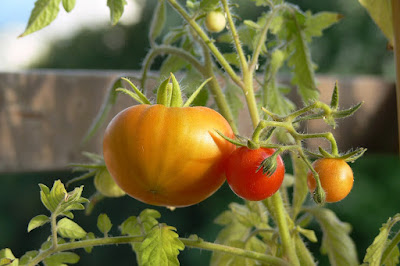Preparing the Soil
• Fertile, well-drained soil is necessary for a successful vegetable garden. The exact type of soil is not as important as:
- Good drainage
- Well-supplied organic matter
- Reasonably free of stones
- Moisture retentive
• If your garden has been used in past years, simply dig in additional organic material and fertilizers (compost or manure and any good commercial complete plant food — follow the label directions to apply).
• If using an unused plot, prepare soil the pre- ceding fall. Work in some organic material. Different types of vegetables require varying degrees of soil acidity. The pH requirements of different garden vegetables will determine what steps must be taken to amend the soil. Be sure the garden will receive at least 6 hours of full sun each day.
• Once soil structure, fertility and pH have been established, the soil should be tilled one last time and raked smooth.
Planting Tips
• Using your garden layout map, use stakes to mark out where different rows will be planted.
• Build trellises or use stout stakes for climbing plants.
• Create mounds for vining plants such as cucumbers, pumpkins, melons, etc.
• Establish pathways early.
• Sow your seeds or bedding plants at the recommended planting depths and spacing requirements.
Sowing the Seeds
• Stretch a string between two stakes to mark the row or use a straight piece of lumber as a guide.
• Open a “V”-shaped furrow with the corner of a hoe.
• Set the depth to the requirement on the seed package.
• Tap the package lightly with your finger as you move down the row, distributing the seed evenly.
• Larger seeds may be placed individually.
• Plant extra seeds in each row to allow for failed germination and for thinning.
• Cover the seeds with fine soil.
• Firm the soil over the seeds to insure good soil contact.
• Water thoroughly using a gentle spray.
• Keep the soil moist until seedlings are up.
• Once seedlings have developed their second and third set of true leaves, thin as needed, keeping the strongest plants.
Started Plants
• Dig a small hole slightly wider and deeper that the root ball of the plant.
• Water the plant thoroughly prior to planting to lessen shock.
• Gently tap the pot or squeeze the cell to loos- en the roots and remove the new plant.
• Loosen outer roots.
• Set the plant into the hole slightly deeper than what it was growing in the pot.
• Firm the soil around the plant.
• Water well.
Other Tips
• Give plants extra water during dry periods. Most vegetables benefit from an inch or more of water each week, especially when they are fruiting.
• Mulch between the rows to control weeds and to conserve moisture in the soil.
• Use a complete fertilizer, such as Plant Tone, Neptune’s Harvest, or Miracle Gro. Follow the label directions for the amount to use and the frequency of application. Be vigilant during the growing season against insects and disease. Discovering a bug or disease problem early makes it easier to take appropriate action and eliminate the pests. Follow all manufactures’ recommendations on pesticides.
• Weed regularly, as weeds rob the vegetables of water, light, food and root space, and can harbor disease and insects.
• Recycle spent plant and other vegetable matter into a compost pile once you have harvested your crop. Vegetable matter containing disease organisms should not be composted.


No comments:
Post a Comment